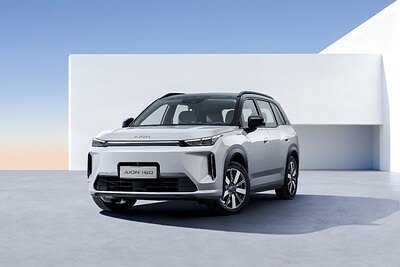
AION i60 Challenges EV Status Quo with Affordable Extended-Range SUV
GAC AION’s new i60 SUV aims to democratize extended-range electric driving with aggressive pricing and a robust charging network. Can it break through in China's crowded NEV market?
AION i60 Challenges EV Status Quo with Affordable Extended-Range SUV
GUANGZHOU, CHINA – November 17, 2025 – GAC AION has launched its new i60 SUV, a vehicle positioned to disrupt the burgeoning Chinese new energy vehicle (NEV) market. The i60, available in both extended-range electric vehicle (EREV) and pure electric (EV) versions, targets a competitive price point, aiming to alleviate range anxiety and broaden the appeal of electric driving. The launch comes at a critical juncture for the Chinese auto industry, as manufacturers grapple with slowing growth and intensifying competition.
Riding the EREV Wave
The AION i60’s key differentiator is its emphasis on extended-range technology. While fully electric vehicles gain traction, range anxiety remains a significant barrier for many potential buyers. The i60 EREV addresses this concern with a combined range of 1,240 kilometers, leveraging a gasoline engine to extend the electric driving range. The vehicle boasts an impressive fuel-to-electricity conversion rate of 3.73 kWh/L, earning it recognition from the China Automotive Energy Research Institute (CAERI). “EREV technology offers a practical bridge for consumers hesitant to fully commit to electric driving,” notes an industry analyst. “It allows them to experience the benefits of electric driving without the fear of being stranded.” Independent tests have confirmed the i60’s fuel efficiency, with some reports indicating a real-world fuel consumption as low as 4.9 L/100km.
The EV version of the i60 also offers a competitive range of 650 kilometers, utilizing a 75 kWh battery. Fast charging capabilities enable a significant range boost in a short period, with the ability to add 200 km of range in just five minutes. While pure EVs are becoming increasingly popular, the EREV option positions the i60 to appeal to a wider range of consumers, particularly those in regions with limited charging infrastructure.
Navigating a Crowded Market
The Chinese NEV market is notoriously competitive, with over 100 brands vying for market share. BYD currently dominates the landscape, holding over 34% of the market in 2024. However, other players, such as Geely, Leapmotor, and Xpeng, are also making significant gains. The AION i60 enters this crowded market with a price tag starting at 104,800 yuan, making it an attractive option for budget-conscious consumers. “Pricing is crucial in the Chinese market,” says a local automotive consultant. “Consumers are looking for value for money, and AION has positioned the i60 accordingly.”
The i60 directly competes with models like the Geely Galaxy L7 PHEV and the BYD Song Plus PHEV. To stand out, AION is emphasizing its robust charging infrastructure. The company claims to have deployed over 20,000 proprietary charging stations and access to over 1.37 million interconnected chargers nationwide. While independent verification of the network’s reliability is ongoing, a widespread charging network is a critical asset for any NEV manufacturer in China.
The ‘Panyu Action’ Strategy
The launch of the i60 is part of a broader strategic initiative known as ‘Panyu Action,’ launched by GAC Group in November 2024. The strategy aims to revitalize GAC’s self-owned brands by shifting strategic control to operational teams and focusing on product development. Under the plan, GAC intends to launch 22 new models over the next three years, with seven slated for release in 2025. The i60 is one of the first models to emerge from this new strategy. While the ‘Panyu Action’ has faced initial challenges, with GAC AION experiencing a decline in sales in the first five months of 2025, the company remains optimistic about its long-term prospects.
“The goal is to achieve 2 million sales for self-owned brands by 2027,” explains a source close to GAC. “The ‘Panyu Action’ is a long-term commitment, and we are confident that it will deliver results.” The success of the i60 will be a key indicator of whether this ambitious plan is on track.
The i60’s launch is a bold move for AION, positioning it to challenge established players and capture a larger share of the rapidly growing Chinese NEV market. The vehicle’s competitive pricing, extended-range technology, and robust charging infrastructure offer a compelling value proposition for consumers. “AION is taking a calculated risk,” notes an industry expert. “The i60 has the potential to disrupt the status quo, but it will need to overcome significant challenges in a crowded and competitive market.”
📝 This article is still being updated
Are you a relevant expert who could contribute your opinion or insights to this article? We'd love to hear from you. We will give you full credit for your contribution.
Contribute Your Expertise →